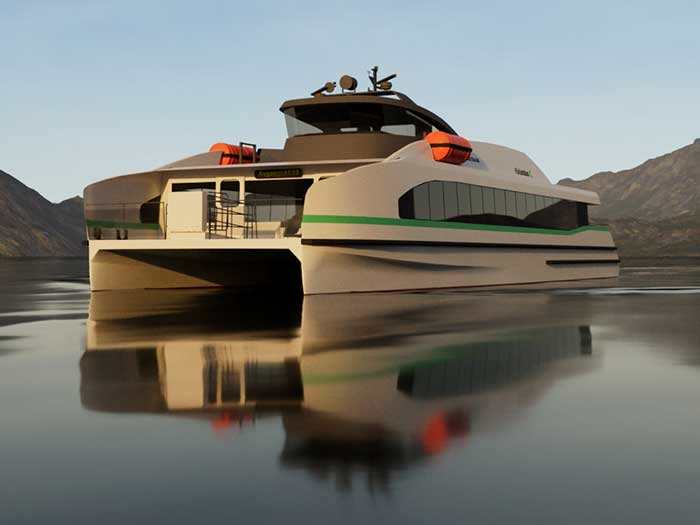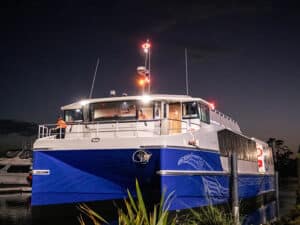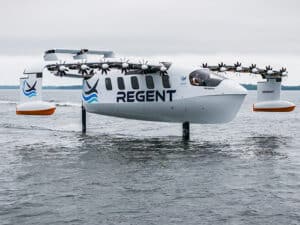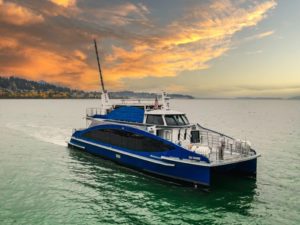
World’s first fully-electric fast ferry starts construction
Written by Nick Blenkey
Artist’s rendering of the Medstraum ferry
The Fjellstrand shipyard on Norway’s west coast has kicked off construction on a 31 meter long by 9 meters wide catamaran that will be the world’s first fully-electric, zero-emission ferry to be classed in accordance with the International Code of Safety for High-Speed Crafts (HSC Code).
Carrying around 150 passengers, it will be equipped with two electric motors and a 1.5 MWh capacity battery with a charging power of more than 2 MW. It has been designed for a service speed of 23 knot.
Called Medstraum (“with electricity”), it will begin a trial passenger service between the city of Stavanger and surrounding communities and islands in spring 2022 as the demonstrator for the TrAM project.
The TrAM project started in 2018 and has secured EUR 11.7 million in financing from the European Union’s Horizon 2020 research and innovation program and has also received funding the Research Council of Norway.
The TrAM consortium includes 13 European partners, and is coordinated by Rogaland City Council through its independent mobility services company Kolumbus, which will also own and operate the demonstrator vessel. Rogaland County Council has itself committed EUR 6.8 million in cofunding for the vessel.
The demonstrator is designed and will be built by Fjellstrand shipyard with the energy system being provided by Wärtsilä and the propulsion system by Servogear. Vessel modules will be delivered by Leirvik, with aluminum supplied by Hydro Extrusion Norway. Among other organizations involved are German application-oriented research organization Fraunhofer, which is leading work on adapting modularity models from the automotive and aviation industry to the needs of the maritime industry.
The TrAM project scope also includes the development of two further “replicato’ vessels, one for passenger operations on the River Thames in London and the other for deployment on inland waterways in Belgium.
The project partners have worked hard to optimize the design of the Medstraum and the hydrodynamic performance of the hull. Both the hull and superstructure will be built in aluminum, which in addition to low weight for lower energy consumption contributes to the circular economy as it is easy to recycle.
TrAM is also revolutionary in terms of simplifying design and manufacturing of the future vessels, drawing on Fraunhofer’s experiences in modular production techniques from the car and aviation industries. Using advanced modularization, the project aims to lower production costs and engineering hours for electric fast ferries by 25% and 70%, respectively, which will significantly enhance their competitiveness.




